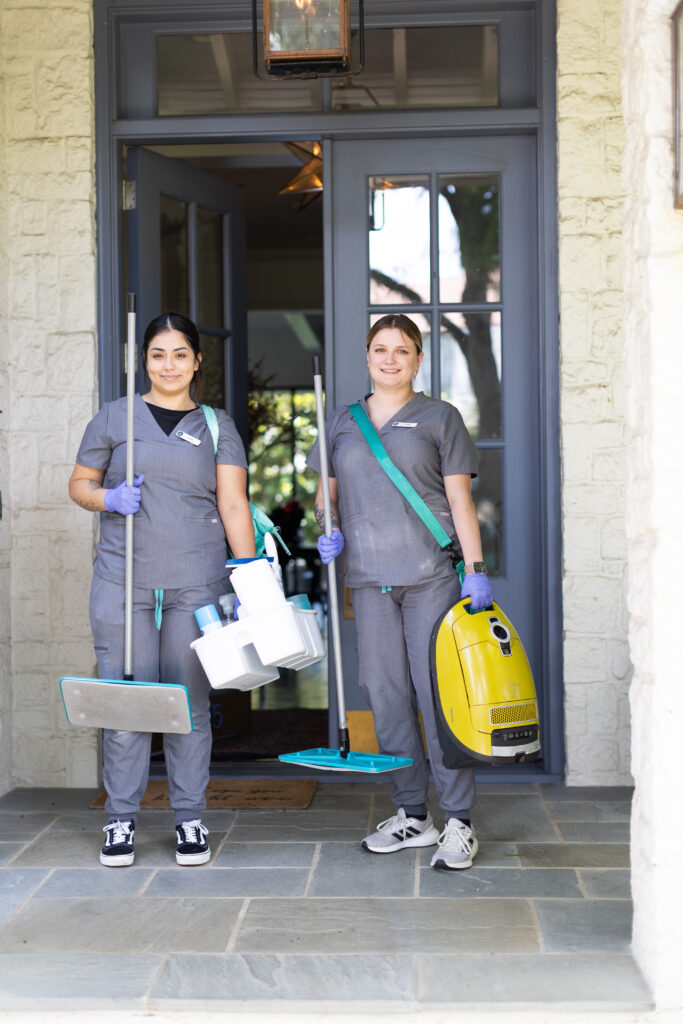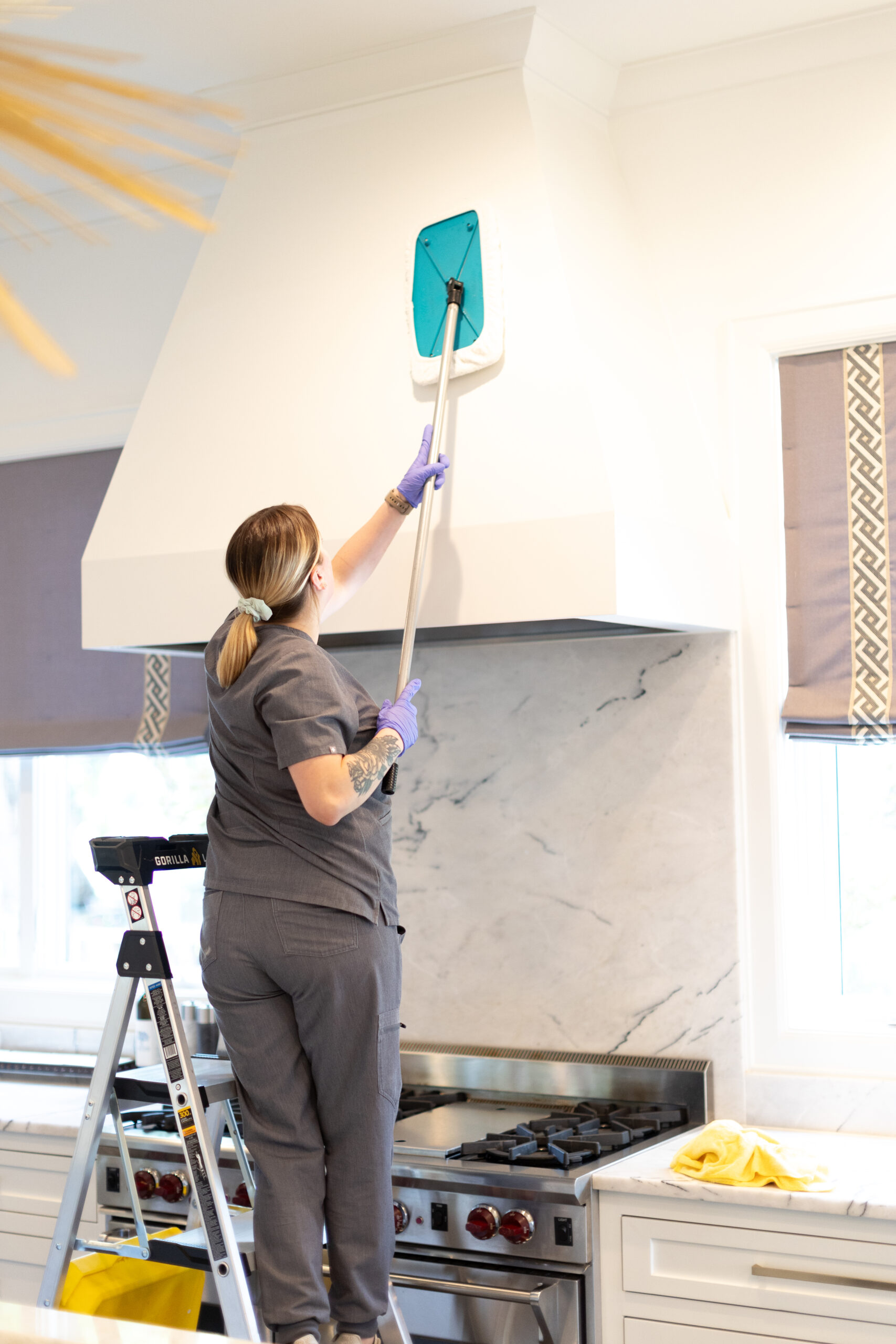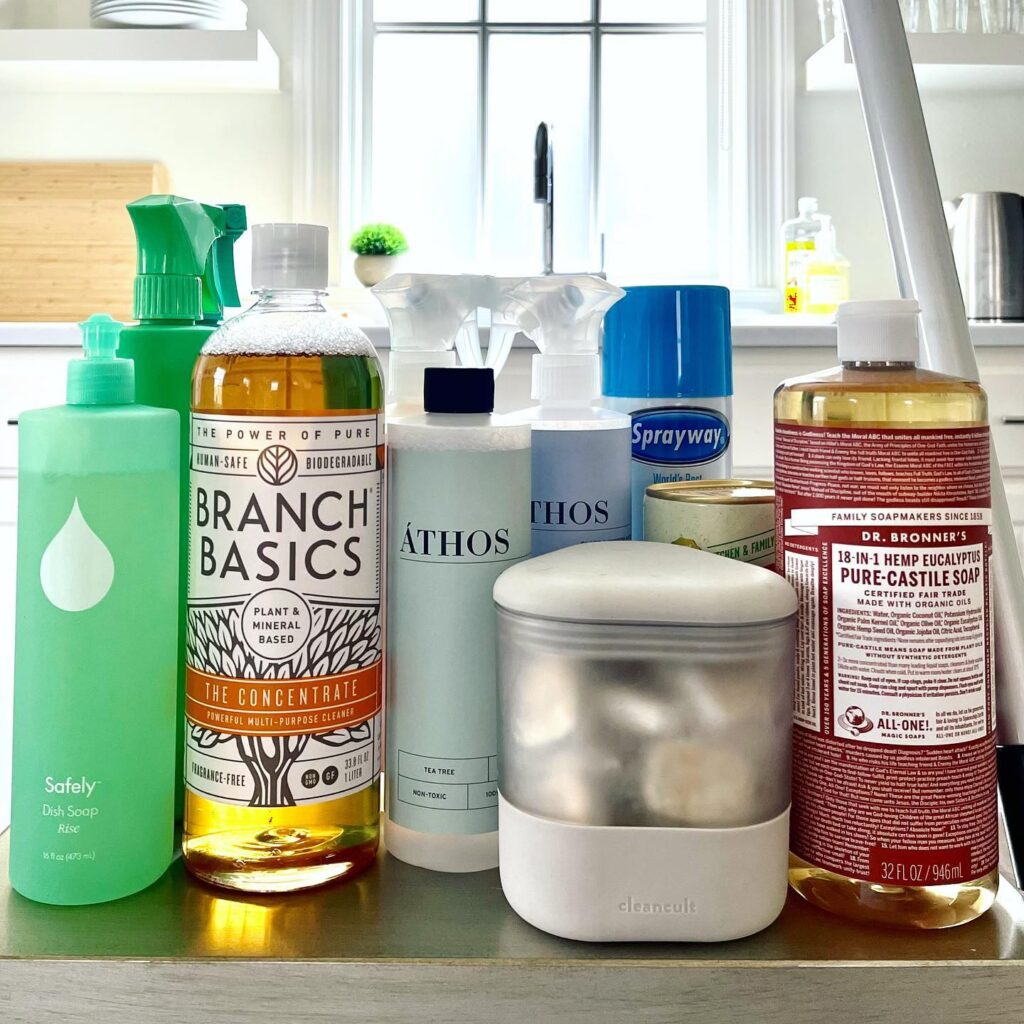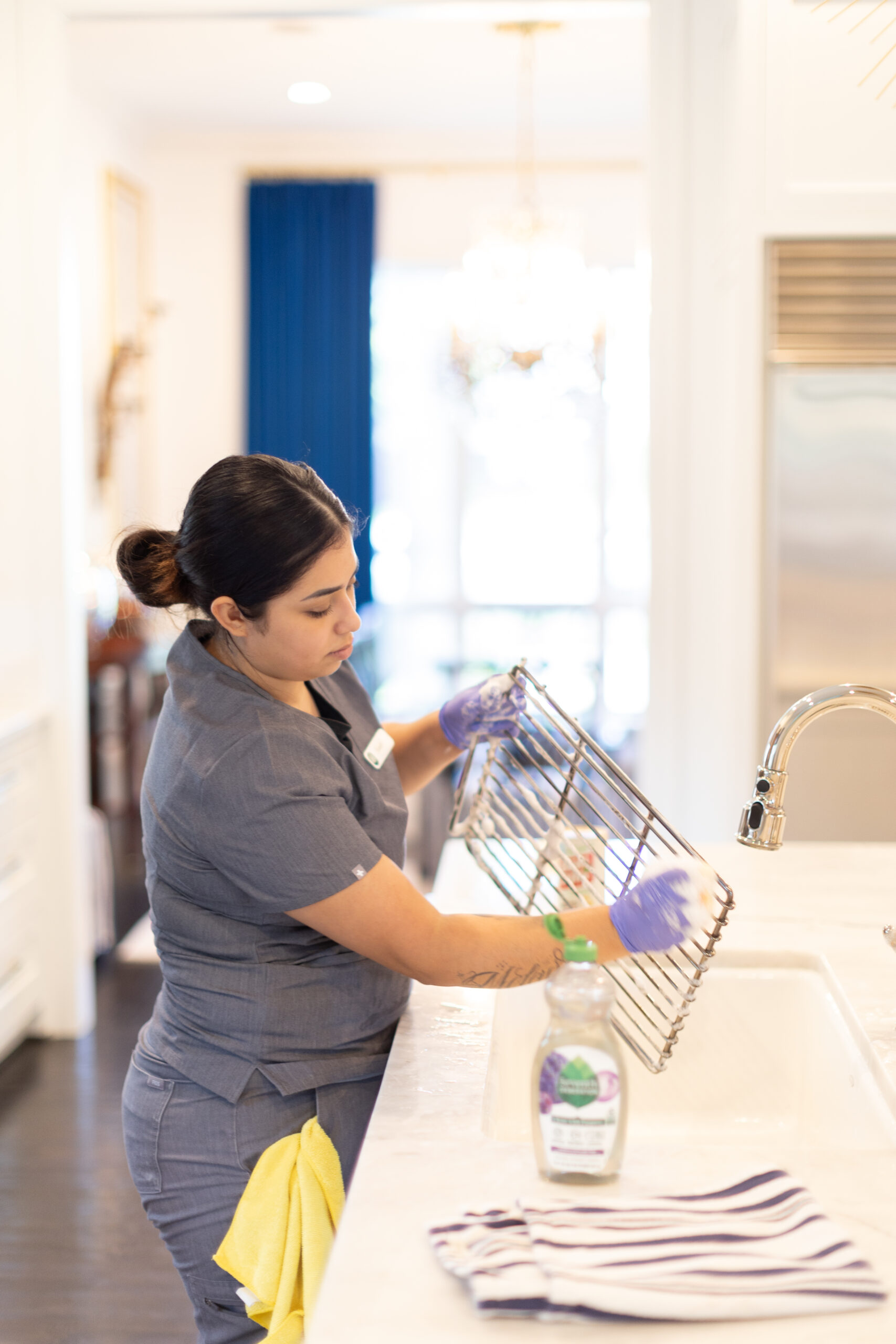How to Clean and Sanitize a Wooden Cutting Board: The Ultimate Guide

A wooden cutting board, as simple as it sounds, is one of the most frequently used kitchen tools. It’s considered a classic kitchen tool due to its ability to be gentle on knife blades and its natural aesthetic, often used as a serving platter.
However, despite the uses, it is often neglected when it comes to proper cleaning. Wood is indeed naturally antimicrobial, but it can still harbor bacterial growth if not maintained correctly. Unlike plastic cutting boards, which can be easily tossed in the dishwasher, wooden cutting boards require some extra care.
So, how exactly are you supposed to clean and, most importantly, maintain your wooden cutting boards? A dirty cutting board can ruin your meal—here’s how to keep it spotless and safe.
Why Cleaning a Wooden Cutting Board Properly Matters
The aesthetics of a wooden board that has been maintained properly are just a small part of the story. There is safety and longevity involved, too. Here is the reason regular cleaning is necessary:
Wood Absorbs Food and Moisture
Wood is a natural absorbent of liquids, resulting in subsequent stains and odor. In addition, if not properly cleaned, residues of foods can crystallize in the grain over time, making it difficult to keep the board fresh.
Bacteria Can Grow If Not Washed Properly
Wood has inherent antimicrobial properties, but that does not make it susceptible to bacteria. If leftovers from food are not washed away completely, the bacteria will multiply, especially if the board remains wet.
Dishwashers Ruin Wooden Boards
A wooden cutting board never belongs in the dishwasher. The heat, steam, and excess moisture will cause the wood to warp, crack, and dry out, thus shortening its life.
Proper Care Makes Your Board Last Longer
A good quality wooden board can last for years, even decades, if it is properly cleaned, sanitized, and conditioned regularly. Maintenance will reduce the frequency of replacements.
A well-maintained kitchen starts with a seasonal deep cleaning checklist. This includes cleaning your cutting boards too. Let’s look at how it can be done at home with non-toxic cleaners.

Daily Cleaning: Quick and Easy Steps
Daily maintenance of your home can make things easy. Ensure to add deep cleaning to your list of housekeeping tasks.
Here is the best procedure for cleaning your wooden cutting board after each use:
Step 1: Use a spatula or paper towel to scrape off the food remnants.
Step 2: Use a soft sponge to wash it with warm water and mild dish soap. Stay away from abrasive scrubbers that can harm the wood.
Step 3: Rinse well to remove all soap residue.
Step 4: Dry immediately with a clean towel. Never leave it wet.
Step 5: Air dry upright to prevent moisture from getting trapped.
Pro Tip: Don’t soak the board in water, as it will take up too much liquid and crack or warp thereafter.
We recommend you use non-toxic cleaning products such as Bon Ami for a safer cleaning experience.
Deep Cleaning: Remove Stains and Odors
Even with daily cleaning, wooden boards can develop stains and smells over time. Here’s how to tackle them:
Baking Soda Paste (For Stains)
- Mix a tablespoon of baking soda with some water to get the paste.
- Spread it over the stain and scrub lightly with a soft brush.
- Rinse well and dry immediately.
Salt & Lemon Scrub (For Odors)
- Sprinkle coarse salt all over the board.
- Take half of a lemon and wipe the board around in circular movements.
- Let it sit for 5 minutes before rinsing.
Vinegar Solution (For Bacteria)
- Combine white vinegar and water in equal parts within a spray bottle.
- Spray the board and let it sit for 5 minutes.
- Wipe clean with a damp cloth and dry immediately.
Hydrogen Peroxide (For Deep Sanitizing)
- Pour 3% hydrogen peroxide over the board.
- Spread it evenly with a clean cloth.
- Allow it to sit for a few moments, then rinse and dry.
Pro Tip: If you are concerned that stronger cleaning agents might compromise food safety, then consider professional cleaners instead.
Vella Cleaning Service in Austin is here to help you out. We use food-safe sanitizers that are effective yet without harsh chemicals. We are the best house cleaning service in Dallas and Austin. We can help you clean your kitchen and utensils.

How to Sanitize a Wooden Cutting Board
Sometimes, a quick wipe won’t cut it—especially after prepping raw meat, poultry, or fish. Deep cuts or cracks in your board can trap food and moisture, creating the perfect breeding ground for bacteria.
Regular sanitization prevents bacterial buildup in these grooves. Make some sanitizing sprays at home for easy and hassle-free cleaning. Here is how you can prepare them:
DIY Sanitizing Spray Recipes
- Vinegar & Lemon Spray: Mix white vinegar, lemon juice, and water to naturally disinfect and remove odors. Spray it and let sit for 5 minutes, then wipe clean.
- Hydrogen Peroxide Spray: A mix of hydrogen peroxide, water, and vinegar effectively kills bacteria from raw meat. Spray, wait 10 minutes, rinse, and dry.
- Alcohol-Based Spray: Isopropyl alcohol and water provide a quick disinfecting solution. Spray, let it evaporate, and wipe for instant sanitization.
- Baking Soda & Vinegar Spray: Baking soda lifts stains while vinegar disinfects. Spray, scrub lightly, rinse, and dry thoroughly.
Even with regular cleaning, sanitizing once a week keeps your board free from hidden bacteria and extends its lifespan.
Proper sanitization keeps your kitchen safe.
Oiling & Conditioning: The Secret to a Long-Lasting Cutting Board
Wood is naturally porous, meaning it absorbs moisture and dries out over time. Without regular conditioning, your cutting board can become brittle, crack, or warp, making it unsafe for food preparation.
Regular oiling keeps the wood hydrated, prevents moisture absorption, and extends its lifespan.
Best Oils for Your Board
- Food-grade mineral oil: The best option for maintaining wood.
- Beeswax or coconut oil: Adds extra protection.
How to Oil Your Board
- Pour a small amount of oil onto the board.
- Spread it evenly using a clean cloth.
- Let it soak in overnight.
- Wipe off any excess before using it again.
Pro Tip: Oil your board once a month to keep it in top shape.
Common Cutting Board Mistakes to Avoid
Soaking your board in water
Wooden cutting boards absorb water, and prolonged soaking causes the fibers to expand and contract unevenly as they dry. This leads to warping, cracking, and even mold growth, making the board unsafe for use.
Instead of soaking, always wash your board quickly with mild soap and warm water, then dry it immediately to maintain its shape and durability.
Using the wrong type of oil
Not all oils are safe for conditioning wooden cutting boards. Vegetable, olive, or other cooking oils can turn rancid over time, creating a sticky surface and an unpleasant smell.
Instead, use food-grade mineral oil, beeswax, or coconut oil to keep your board hydrated, smooth, and crack-free without risking bacterial buildup.
Storing it incorrectly
Storing a wooden cutting board in a damp or enclosed space traps moisture, creating the perfect environment for mold and mildew to grow.
To prevent this, always dry your board completely before storing it. Keep it in a well-ventilated, upright position to allow air circulation and avoid stacking damp boards together.
Cutting raw meat on a wooden board
It’s not recommended to cut raw meat on a wooden cutting board. Wood is porous and can absorb juices from meat, creating a breeding ground for bacteria like Salmonella and E. coli if not properly sanitized.
How to Remove Mold & Tough Stains from a Wooden Cutting Board
If mold appears or stains won’t go away, follow these steps:
Step 1: Scrub with baking soda and vinegar paste.
Step 2: Leave it in direct sunlight for a few hours to kill mold spores.
Step 3: Sand it down with fine sandpaper if deep stains remain.
Step 4: Re-oil after cleaning to restore moisture.
When to throw out your cutting board: signs it’s time for a new one:
- Deep Cracks and Splits: Large cracks trap bacteria and are difficult to clean properly.
- Persistent Odors or Stains: If smells and stains remain even after deep cleaning, bacteria may be embedded in the wood.
- Warping or Uneven Surface: A warped board won’t sit flat, making cutting unsafe.
- Mold Growth: If mold appears and keeps recurring, it’s time to replace the board.
- Excessive Knife Grooves: Too many deep knife marks can harbor bacteria and weaken the board’s structure.
Mold on cutting boards and mildew on hardwood floors can be tough to remove. Proper cleaning and maintenance are key to preventing these issues before they start.

FAQs: Everything You Need to Know About Cleaning Your Cutting Boards
Q: How often should I clean my wooden cutting board?
A: After every use and deep cleaning once a week.
Q: Can I put my wooden cutting board in the dishwasher?
A: No, dishwashers ruin wooden boards. Always handwash.
Q: What’s the best way to remove strong odors?
A: A salt and lemon scrub works great.
Q: What oil should I use to maintain my board?
A: Food-grade mineral oil is the best choice.
Cleaning, sanitizing, and oiling your cutting board doesn’t have to be complicated. With just a few simple steps, you can keep it fresh, bacteria-free, and long-lasting. Make sure to use eco-friendly cleaning products to ensure safety.
Want a cleaner kitchen? Book a cleaning with Vella—our professional cleaners take care of the mess, so you don’t have to!